The complicated history of the black superhero
It's been a long journey to get to this particular moment in popular culture
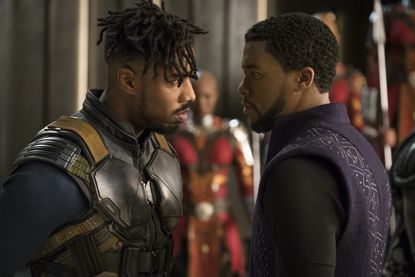

It's been a long journey to get to this particular moment in popular culture. Black Panther — the much-anticipated adaptation of one of Marvel Comics' most culturally significant superheroes — debuts this weekend on the big screen, a month after The CW started airing Black Lightning, a thrilling and original TV series drawn from DC Comics' belated attempt to compete with Marvel.
Both Black Panther and Black Lightning have often been underserved by their publishers. They were introduced in 1966 and 1977, respectively, in part to address superherodom's shameful racial imbalance, with the characters' creative potential almost an afterthought. But over the decades, passionate writers and artists — including Black Panther writer-director Ryan Coogler and Black Lightning showrunner Salim Akil — have committed themselves to fleshing these heroes out, by aiming first and foremost to tell compelling stories about them, from a black perspective.
But this trip was long, arduous, and complicated by the mixed motivations that comic book creators have had for inventing black heroes.
Subscribe to The Week
Escape your echo chamber. Get the facts behind the news, plus analysis from multiple perspectives.

Sign up for The Week's Free Newsletters
From our morning news briefing to a weekly Good News Newsletter, get the best of The Week delivered directly to your inbox.
From our morning news briefing to a weekly Good News Newsletter, get the best of The Week delivered directly to your inbox.
The Ebony era
Like the rest of the American mass media, the comics pages once tended toward broad racial stereotypes, even when artists meant well. Innovative cartoonist Will Eisner, for example — who helped pioneer the concept of the graphic novel in the '70s and '80s — had to answer throughout his career for the big-eyed, big-lipped comic sidekick Ebony White that appeared in his newspaper comic The Spirit throughout the 1940s.
Eisner's later work railed against bigotry of all kinds, and he eventually did drop Ebony from The Spirit, without explanation. In later iterations of the comic written and drawn by other artists — including a DC Comics series that launched in 2007 — Ebony either didn't appear at all, or was used pointedly as a rebuke to Eisner's original version.
Nevertheless, this whole dilemma exemplifies the complications surrounding what we do with the black comics characters of the distant past. As painfully embarrassing as he is now, Ebony was intended by Eisner to be a lovable, heroic assistant to the Spirit. Without his face — and the faces of characters like him in other newspaper strips and comic books — the medium's history looks even whiter than it already is.
The Panther age
In the decade after Ebony was quietly retired, a few black comic book heroes of note appeared, including the African chieftain Waku in the short-lived '50s series Jungle Tales, and the western gunfighter Lobo, who starred in two Dell Comics one-offs in 1965 and '66. But when Wakandan king T'Challa — a.k.a "Black Panther" — made his first appearance in Fantastic Four, he arrived at the right time in American culture to become a minor sensation.
Though the comics featuring Black Panther weren't huge sellers in the '60s and '70s, the character himself was instantly iconic, with his nobility and rich African mythology appealing to the burgeoning Black Power movement. More importantly, the way that writer Stan Lee and artist Jack Kirby approached Black Panther — as a well-rounded hero, rather than a curiosity — set a tone that carried through the way Marvel Comics would handle the wave of black characters that would follow over the course of the next decade.
Black Panther himself remained largely underused by Marvel in the '70s, but the publisher did find room in its comics for Luke "Power Man" Cage, Misty Knight, Bill "Black Goliath" Foster, Ororo "Storm" Munroe, Sam "Falcon" Wilson, Luther "Deathlok" Manning, Eric "Blade" Brooks, and James Rhodes. These characters had diverse backgrounds, purposes, and powers, and have endured largely because they were introduced as integral to the larger Marvel Universe — rather than being mere novelties.
DC gets woke
DC Comics, on the other hand, scrambled to play catch-up with Marvel throughout the '60s ... and well into the '70s. Stan Lee's company became a favorite of college kids and with the mainstream media, thanks to its relatively complex characters and engagement with real-world sociopolitical issues. DC, though, remained stubbornly old-fashioned until late in the '60s, when younger writers and artists like Dennis O'Neil and Neal Adams were given more freedom to modernize.
In 1971, during O'Neil and Adams' groundbreaking run on Green Lantern, they introduced the character John Stewart, a backup Green Lantern who struggled initially to earn the main hero's trust. The first cover featuring Stewart portrayed him as a defiantly angry black man "who really means it when he warns ... 'Beware my power!'"
This early version of John Stewart exemplified the way that DC's black heroes were depicted in the years that followed. One of the most famous images of Black Lightning is of him on the cover of Justice League of America #173, shouting that he'll never join "that jive bunch of turkeys in the JLA." In Teen Titans in the early '70s, the character Mal Duncan spent much of his time with the team feeling insecure and unwanted. In Superboy in 1976, the Legion of Super-Heroes met Tyroc, defender of an island of dark-skinned people that wanted nothing to do with other races.
To be fair, these characters were often more complex than they seemed on the surface. Black Lightning, for one, wore his stand-offishness as part of his persona, to cover for his secret identity as mild-mannered educator Jefferson Pierce.
Still, unlike the richness of Marvel's cast of black heroes, DC's early efforts at increasing racial diversity came across as more gimmicky. That would change in a big way in the '80s.
The Great Mainstreaming
The superhero comics business suffered a sales crunch in the late '70s, but boomed again in the '80s, due to a few different factors: more mature subject matter and storytelling; the rise of the dedicated comic book store; and a surging collectors' market, hungry for special events and reboots. A spike in demand led to a flood of new titles and new characters.
In the middle of this resurgence, DC stumbled upon the black superhero who would eventually (and somewhat unexpectedly) join the company's top-tier pantheon. While reviving the sidekick super-group Teen Titans for the new ongoing series The New Teen Titans, the creative team of writer Marv Wolfman and artist George Pérez followed the example of Marvel's upgraded '70s X-Men comics, which had become a runaway hit in part by diversifying its cast. One of the new heroes Wolfman and Pérez introduced was Victor Stone, a former college athlete who'd been in a horrific accident at his scientist parents' lab, and had much of his body replaced by robotics.
By virtue of being a key part of some of the '80s most popular comics, this character, "Cyborg," stuck around even after The New Teen Titans ran its course. In DC's Justice League animation and movie properties — as well as Cartoon Network's Wolfman/Pérez-inspired Teen Titans cartoons — Vic Stone has become a regular presence, almost as commonplace as the DC trinity of Superman, Batman, and Wonder Woman.
Cynics might suggest that DC defaults to Cyborg in movies and on TV just so that their big Justice League properties feature have at least one hero of color. Even if so, it's telling that the hero they've settled on is Stone, and not John Stewart or Jefferson Pierce, who were introduced in the '70s with much more fanfare. Wolfman and Pérez kept Cyborg's racial identity integral to his character, but like the best of Marvel's first wave of black heroes — like Storm, or Luke Cage — he's always been a character first and a symbol second.
Rewriting history
The integration of superhero comics continued apace in the '90s and '00s, with intriguing new wrinkles. DC and Marvel shook up tradition by giving black characters a chance to put on the costumes of the publishers' best-known heroes. A much less testy John Stewart spent more time as Green Lantern. James Rhodes became such an important part of Iron Man's adventures that he's now a staple of the Marvel Cinematic Universe. When DC "killed" Superman as part of a big '90s publicity stunt, one of the replacements they introduced was the armored science genius John Henry Irons, codenamed "Steel."
Up and down the DC and Marvel rosters, new heroes adopted familiar names — Angel, Aqualad, Batwing, Captain America, Firestorm, Green Arrow, Hawkgirl, Mister Terrific — but with a different racial makeup from the characters they succeeded.
The other crucial change was that more black creators were tapped to tell these stories. The late Dwayne McDuffie co-developed Static, and later helped bring him to animated life in the TV cartoon Static Shock. Artist Denys Cowan (who also co-created Static) drew comics starring Steel, Power Man, and Deathlok. Christopher Priest penned one of the greatest all-time runs of Black Panther comics in the '90s, expanding that characters' universe and personality in ways that have directly influenced the new Marvel movie.
Multimedia
During the run-up to the release of Black Panther, some over-excited pop culture commentators have bought into the hype that this movie is the "first" to be anchored by a black superhero. This news would undoubtedly flummox Wesley Snipes (star of 1998's Blade, 2002's Blade II, and 2004's Blade: Trinity), Shaquille O'Neal (star of 1997's Steel), and Michael Jai White (star of 1997's Spawn ... the great forgotten superhero and superhero movie of the '90s).
That said, it matters a great deal that both Black Panther and Black Lightning are reclaiming characters who at one point in time helped define "the black superhero."
The CW's DC-derived action-adventure shows have done marvelously well at using color-blind and gender-blind casting so extensively that they've effectively reshaped decades-old mythologies into the more inclusive universe they should've always been. But Black Lightning's something different. Salim Akil and his partner Mara Brock Akil have embraced what originally set Jefferson Pierce apart, and are making a show about a hero fighting drug-lords, gangs, and anyone else exploiting or demeaning the people in his neighborhood. From it's eclectic R&B soundtrack to its knowing nods to '70s blaxploitation movies, Black Lighting has a distinctive flavor.
As for Black Panther, it's already been pegged to be one of 2018's biggest hits, which would cement Creed writer-director Ryan Coogler as one of Hollywood's brightest young talents. And notably, rather than surround T'Challa with white characters, Coogler's cast is mostly black, telling a sprawling, globe-spanning story that acknowledges diversity even within a racial identity.
Ultimately, Black Panther and Black Lightning are doing what the best legacy pop culture products do: honoring what their original creators intended, and not feeling limited by what was actually produced. In every old and new meaning of the word, these characters have never been so seen.
Create an account with the same email registered to your subscription to unlock access.
Sign up for Today's Best Articles in your inbox
A free daily email with the biggest news stories of the day – and the best features from TheWeek.com
Noel Murray is a freelance writer, living in Arkansas with his wife and two kids. He was one of the co-founders of the late, lamented movie/culture website The Dissolve, and his articles about film, TV, music, and comics currently appear regularly in The A.V. Club, Rolling Stone, Vulture, The Los Angeles Times, and The New York Times.
-
 'Make legal immigration a more plausible option'
'Make legal immigration a more plausible option'Instant Opinion Opinion, comment and editorials of the day
By Harold Maass, The Week US Published
-
 LA-to-Las Vegas high-speed rail line breaks ground
LA-to-Las Vegas high-speed rail line breaks groundSpeed Read The railway will be ready as soon as 2028
By Peter Weber, The Week US Published
-
 Israel's military intelligence chief resigns
Israel's military intelligence chief resignsSpeed Read Maj. Gen. Aharon Haliva is the first leader to quit for failing to prevent the Hamas attack in October
By Justin Klawans, The Week US Published
-
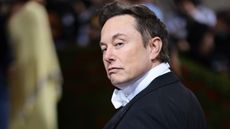 Walter Isaacson's 'Elon Musk' can 'scarcely contain its subject'
Walter Isaacson's 'Elon Musk' can 'scarcely contain its subject'The latest biography on the elusive tech mogul is causing a stir among critics
By Theara Coleman Published
-
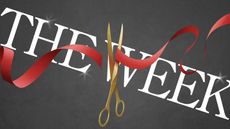 Welcome to the new TheWeek.com!
Welcome to the new TheWeek.com!The Explainer Please allow us to reintroduce ourselves
By Jeva Lange Published
-
 The Oscars finale was a heartless disaster
The Oscars finale was a heartless disasterThe Explainer A calculated attempt at emotional manipulation goes very wrong
By Jeva Lange Last updated
-
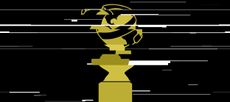 Most awkward awards show ever?
Most awkward awards show ever?The Explainer The best, worst, and most shocking moments from a chaotic Golden Globes
By Brendan Morrow Published
-
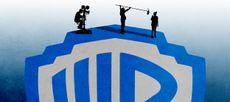 The possible silver lining to the Warner Bros. deal
The possible silver lining to the Warner Bros. dealThe Explainer Could what's terrible for theaters be good for creators?
By Jeva Lange Last updated
-
 Jeffrey Wright is the new 'narrator voice'
Jeffrey Wright is the new 'narrator voice'The Explainer Move over, Sam Elliott and Morgan Freeman
By Jeva Lange Published
-
 This week's literary events are the biggest award shows of 2020
This week's literary events are the biggest award shows of 2020feature So long, Oscar. Hello, Booker.
By Jeva Lange Published
-
 What She Dies Tomorrow can teach us about our unshakable obsession with mortality
What She Dies Tomorrow can teach us about our unshakable obsession with mortalityThe Explainer This film isn't about the pandemic. But it can help viewers confront their fears about death.
By Jeva Lange Published